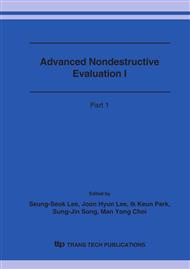p.658
p.662
p.666
p.670
p.674
p.678
p.684
p.688
p.694
Analysis of Fatigue Crack Growth in Weld Specimen Using Three-Dimensional Cohesive Zone Model
Abstract:
Three-dimensional cohesive zone model was used to simulate the fatigue crack growth of a weld specimen. Damage accumulation was accounted for using a constitutive model. A surface along which the fatigue crack would grow was assumed along the symmetric plane of the specimen and the cohesive elements were applied on the surface. Tensile tests of weld and parent specimens were simulated by the finite element method. Results of fatigue crack growth for the weld and parent specimens were compared and the effect of changing a constitutive parameter on the fatigue crack growth behavior was also checked.
Info:
Periodical:
Pages:
674-677
Citation:
Online since:
October 2006
Authors:
Price:
Сopyright:
© 2006 Trans Tech Publications Ltd. All Rights Reserved
Share:
Citation:


